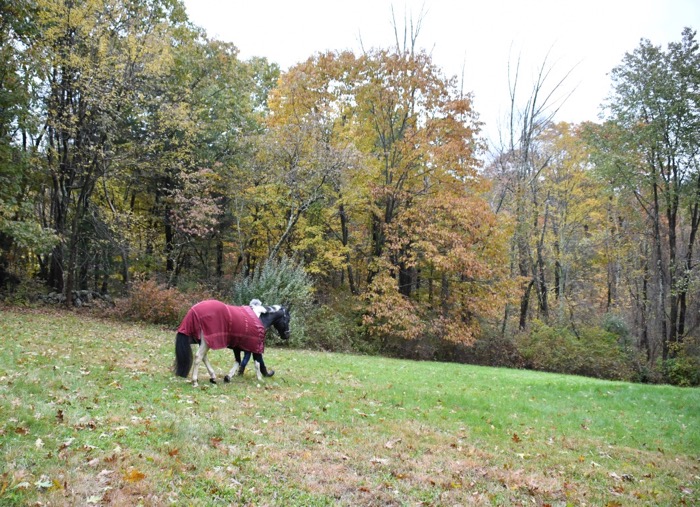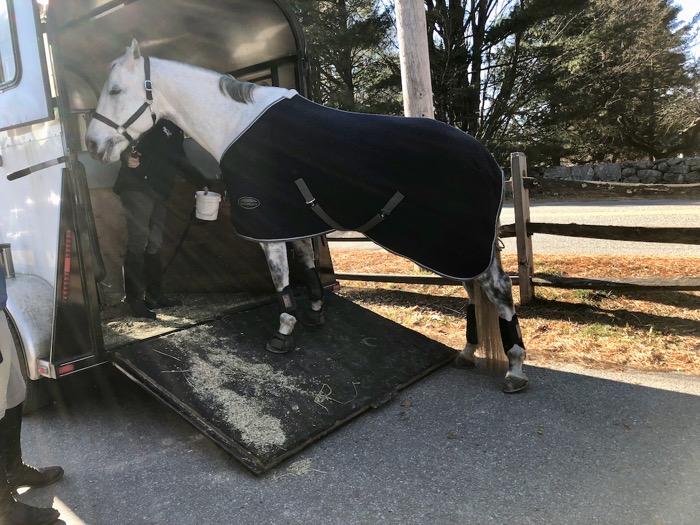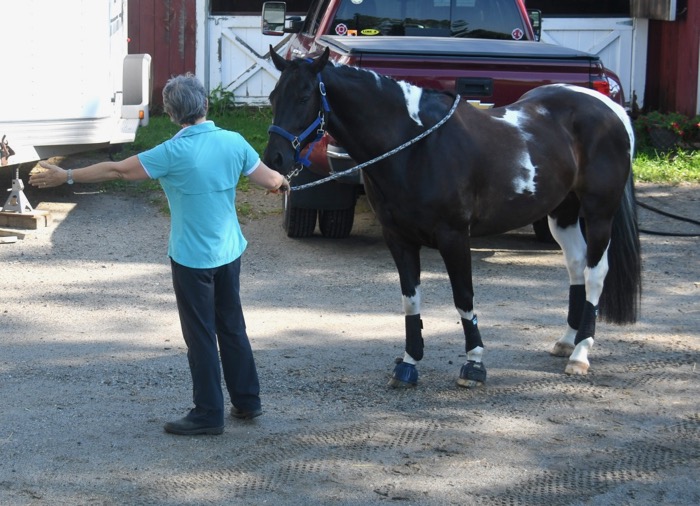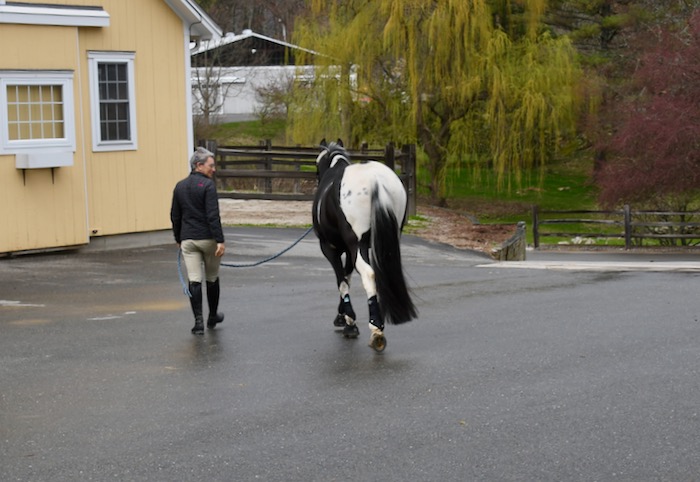In an ideal world, your horse confidently walks with you anywhere. A comfortable halter and lead rope provide for subtle, tactile information. Turn here. Slow down. Wait.

However, when faced with something worrisome, a horse might need more from you. We’ve all been there. A horse won’t get in the trailer, so you pull out the grain bucket and try to lure them in. You get so far, and then the horse stops.
Here Maggie has said No further! and looks away from the bucket. Maggie is a horse that is seriously food focused, so this is a pointed message.

Horses are not fools. They know that we’re trying to bribe them to go where they don’t want to. They are perfectly capable of weighing the options. For some,
Auto Amazon Links: No products found.

Luring is quite a useful tool to have in your training kit. It can be quick and simple – follow this bit of food to this place and you get something yummy. With that, you’ve moved an animal into a position that you need them to be. But it doesn’t always go the way you hope. The horse walks only so far, and then turns to flee, more anxious than ever. The horse gets frustrated, because they follow that proverbial carrot on a stick, but it never stops for them to eat it.
Also – and this is a major point to think about – in most interactions with our horses we teach them NOT to follow a lure. We want horses to be polite at dinnertime. Here is Tonka, stepping back from the bucket. He does this behavior twice a day, and each time he is rewarded with grain. Why would he ever think that he should go towards a bucket being shaken in a trailer?
Other horses, who are not so polite at meal time, have buckets banged into their faces as the grain is dispensed. That shaking bucket comes with mixed messages. Rattle it in a scary place, and you’re not going to get a horse that’s confident about approaching it.
If you want to be able to use a lure effectively, your horse has to believe that going towards the offered treat will result in a good thing. People are rightly concerned that if the horse sees you as a food dispenser that they will get dangerously demanding. That, however, is easily countered. I don’t teach Tonka to look away from the food (like many clicker trainers do.) Rather, he’s learned that he gets the food when he is truly relaxed. At my barn, I’ve been told that Tonka is the least anxious, most chill, horse at mealtime. I also do not understand handlers who use a version of natural horsemanship in which when the horse “gets too into their space” that they scare them out with shakes of the line and loud voices. This is done without warning to the horse. One moment things are calm and good, and the next they’re being attacked by their person or the gear. The horse might “behave” but they’ll always be on edge. I prefer to teach the horse that coming towards me, when asked, results in comfort and security. Sometimes there is food. When will be clear. That takes time. And being aware, always, of what I’m asking for, what I’m giving in return, and what the horse thinks about it.
If your horse trusts that when you offer something yummy, that all they have to do is to saunter up to you to get it, then you can use luring effectively. This applies to goats too! See this blog.
You can take this training a step further. I’ve taught my horse to target my hand (read more in this blog.) This can be done near Tonka, to get him to turn his head.

Or it can be done in a way that leads him somewhere that he’s not sure about.

I use both luring and targeting. For both I am careful to reward at the moment that Tonka is in motion, so he knows that it’s the putting of one foot in front of the other which is important. Sometimes, all it takes is the crinkling of the peppermint wrapper to get Tonka to move boldly where I want him to go. Sometimes it takes targeting. Always, I’m watching what he has to tell me.


